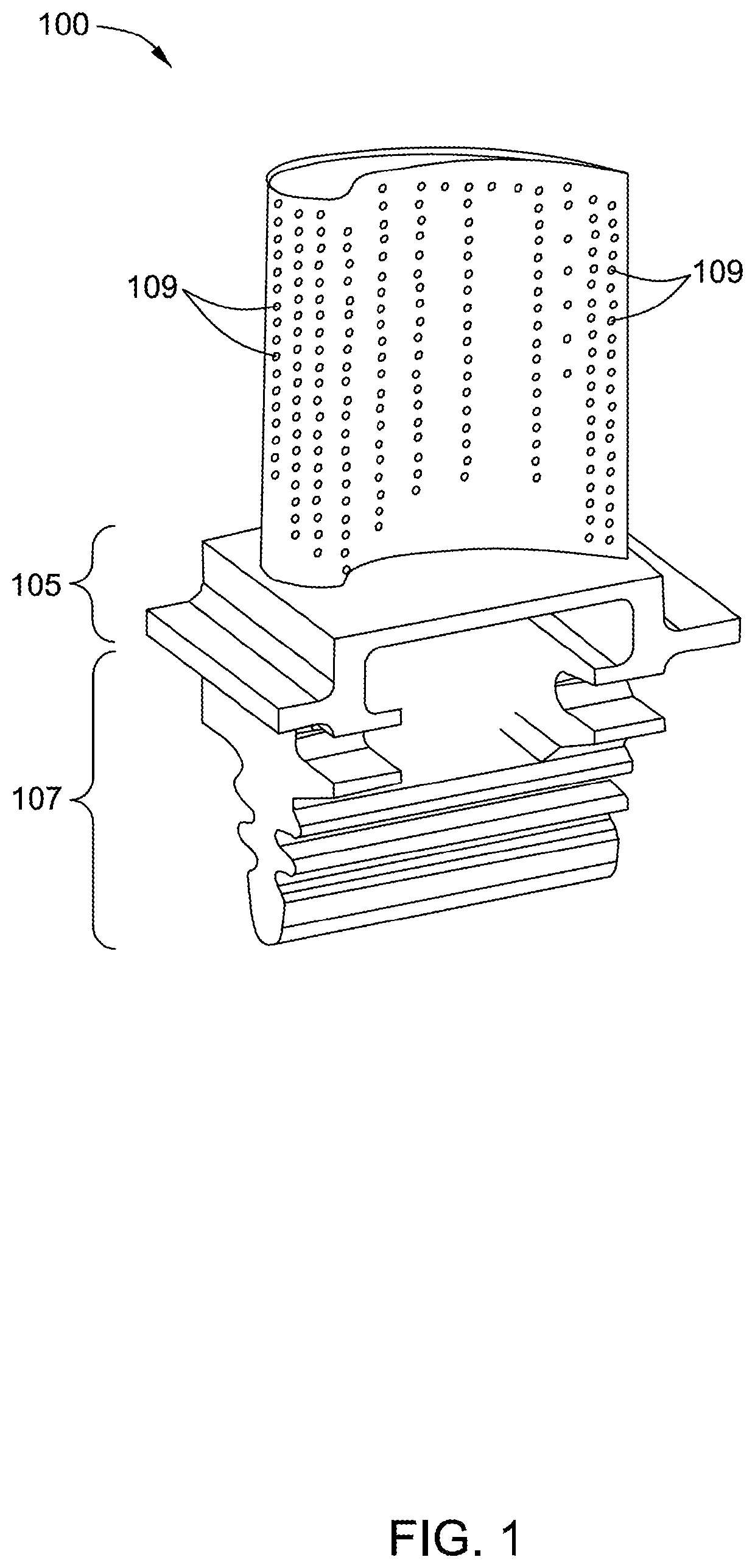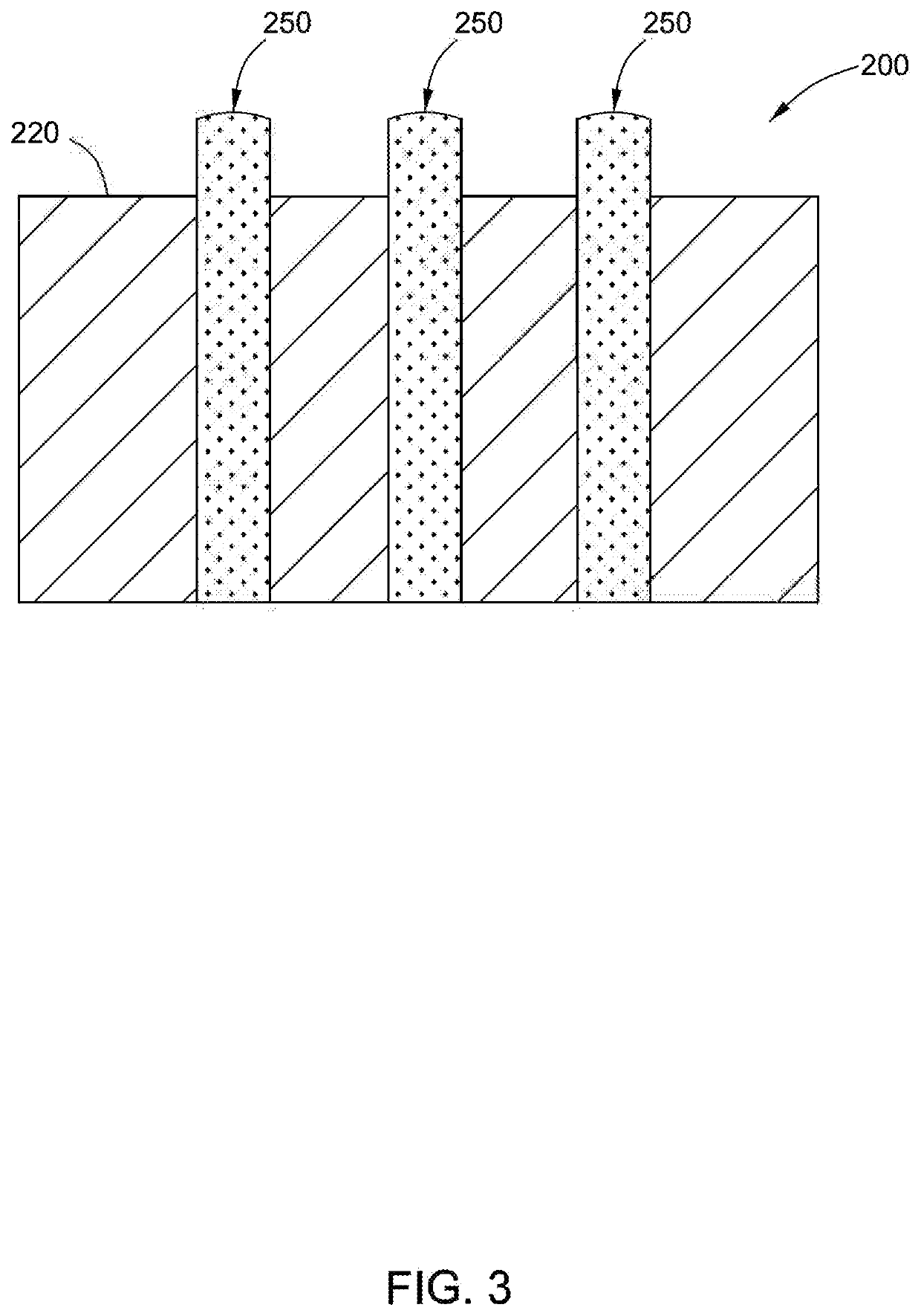Method of coating an article, paste and plug for preventing hole blockage during coating
- Summary
- Abstract
- Description
- Claims
- Application Information
AI Technical Summary
Benefits of technology
Problems solved by technology
Method used
Image
Examples
example 1
[0034]Zirconia based pastes were prepared by mixing zirconia (ZrO2), zircon (ZrSiO4), potassium hydrogen phosphate (K2HPO4), sucrose and distilled water. Paste samples with different ZrO2:ZrSiO4 weight ratios were prepared. Specifically, paste samples of different compositions set forth in the following Table 1 were prepared and applied by a substantially same process. The preparation and application of these paste samples will be described hereinafter by taking Sample 1 as an example. As for Sample 1, 0.5 g of sucrose and 2 g of potassium hydrogen phosphate were dissolved in 2 g of distilled water to form a solution. Then 8 g of zirconia powder with a particle size of about 0.1 micron and 4 g of zircon powder with a particle size of about 1 micron were added into the solution. The mixture was mixed by a SpeedMixer (from FlackTek Inc., SC, USA) with a rotating speed of about 3000 rpm. After about 5 minutes of mixing, a homogeneous paste / slurry was obtained. Pastes of other compositi...
example 2
[0037]Beta-alumina based pastes were prepared by mixing beta-alumina (β-Al2O3), ZrSiO4, K2HPO4, sucrose and distilled water. Paste samples with different β-Al2O3:ZrSiO4 ratios were prepared. Specifically, paste samples of different compositions set forth in the following Table 2 were prepared and applied by a process substantially the same with the process for preparing and applying the zirconia based paste as described herein above in Example 1. The strength and water dispersibility of the plugs made from different beta-alumina based paste compositions are listed in the following Table 2.
TABLE 2Beta-alumina based paste compositions and plug performancePaste compositionsPlug Samplesβ-Al2O3ZrSiO4K2HPO4sucrosewaterperformanceS18 g 0 g3 g0.8 g4 gpoor strengthS28 g0.5 g3 g0.8 g4 gpoor strengthS38 g 1 g3 g0.8 g4 gweak strength & good dispersibilityS48 g2.5 g3 g0.8 g4 ggood strength & good dispersibilityS58 g 5 g3 g0.8 g4 ggood strength & medium dispersibilityS68 g 9 g3 g0.8 g4 gpoor ...
example 3
[0039]Potassium phosphate (K3PO4) and potassium carbonate (K2CO3) were respectively used as the inorganic binder to prepare pastes. Two paste samples were prepared by using K3PO4 and K2CO3 as the inorganic binder, respectively, and then applied to plug holes, by a process substantially the same with the process in Example 1. The compositions of the two paste samples, and the strength and water dispersibility of plugs made from these two paste samples are set forth in the following Table 3.
TABLE 3Paste compositions using K3PO4 or K2CO3 as the inorganic binder and plug performanceSamplesPaste compositionsPlug performanceS1ZrO2ZrSiO4K3PO4sucrosewatergood strength 8 g4 g 2 g0.5 g2 g& good dispersibilityS2ZrO2ZrSiO4K2CO3sucrosewatergood strength 8 g4 g1.8 g0.5 g2 g& good dispersibility
[0040]As illustrated in Table 3, the plugs made from the pastes respectively using K3PO4 and K2CO3 as the inorganic binder have good strength and good water dispersibility.
PUM
| Property | Measurement | Unit |
|---|---|---|
| Percent by mass | aaaaa | aaaaa |
| Percent by mass | aaaaa | aaaaa |
| Percent by mass | aaaaa | aaaaa |
Abstract
Description
Claims
Application Information
 Login to View More
Login to View More - R&D
- Intellectual Property
- Life Sciences
- Materials
- Tech Scout
- Unparalleled Data Quality
- Higher Quality Content
- 60% Fewer Hallucinations
Browse by: Latest US Patents, China's latest patents, Technical Efficacy Thesaurus, Application Domain, Technology Topic, Popular Technical Reports.
© 2025 PatSnap. All rights reserved.Legal|Privacy policy|Modern Slavery Act Transparency Statement|Sitemap|About US| Contact US: help@patsnap.com



